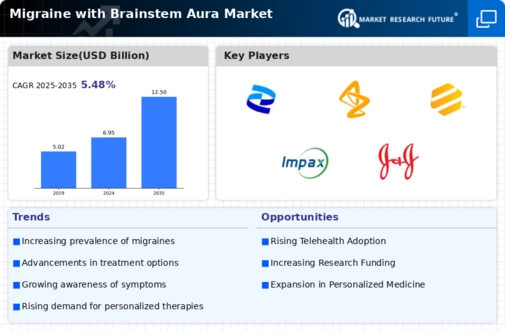Migraine Brainstem Aura Size
Migraine Brainstem Aura Market Growth Projections and Opportunities
Changing symptoms and the risk of misdiagnosis impact the market, thus physicians need improved diagnostic equipment and expertise. Many genetic and familial characteristics impact the MBA market. Researching the genetics of migraine with brainstem aura helps design treatments. Brain research and biomarkers impact the market. Research efforts have sought reliable MBA indications to aid early detection and better treatment options. Hormones, particularly in women, impact MBA prevalence and severity. Specialized therapies that account for biological changes modify the market. It's crucial to examine and identify gender-specific solutions. Overuse of drugs and difficulties finding effective therapies alter market variables. New treatment and preventative techniques are required to address MBA challenges like headaches from too many drugs. Environmental and trigger variables affect the MBA market. Knowing how to handle triggers like food, stress, and physical inputs is crucial to creating full treatment plans and patient education programs. In shifting markets, patient advocacy and education campaigns are crucial. More individuals learning MBA symptoms, causes, and treatments helps with early identification, empowers patients, and improves the market. Sadness and concern impact the market. Considering how MBA is connected to other illnesses helps to comprehensive treatment strategies and improved medical collaboration. Technology affects market considerations, notably medical product manufacturing. MBA patients now have additional treatment options because to neuromodulation devices and external instruments. Legal environment and pharmacological approvals affect market dynamics. Because new drugs are licensed on time and government funds research, MBA treatments are diverse and effective. Telemedicine and online consultations affect MBA market parameters. In-person meetings are difficult for migraine patients, but virtual platforms make healthcare services accessible. People seek therapy and the market develops differently. MBA economics and health care costs impact marketplaces. Economic issues like drug and medical care costs impact the market environment and patient access to treatment.









Leave a Comment